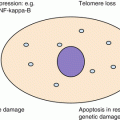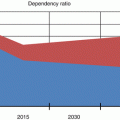(1)
NT Department of Health, Darwin, NT, Australia
Key Points
While people across all cultures agree about the value of respecting elderly people, levels of elder abuse in most communities are high.
Elderly people require access to appropriate care in all settings and hospitals need to be more ‘friendly’ to elderly people.
In many cultures, dementia is seen as a form of mental illness rather than a neurological condition, and this means that it is widely stigmatized and often hidden.
It is possible for elderly people to express their future wishes in advanced care plans so that their wishes will be respected, even if they develop dementia.
There is a need for increased advocacy for the needs of elderly people.
Case Study
MS is an 82-year-old Indian man living with his son and daughter-in-law in a large city in Australia. He was brought to Australia by his son 3 years ago after the death of his wife as neighbours reported that he was not being cared for well. He now lives in a self-contained flat under his son’s house and has gained permanent citizenship—which means he is eligible for government-subsidized healthcare.
Both MS’s son and daughter-in-law work and are away from home from 8 a.m.–7 p.m. The old man is left alone by himself during the day and spends his day pottering around his flat. He also appears to drink several whiskeys each day. Recently he has become more confused. He has been in some shouting matches with his son and on one occasion placed his hands around his son’s neck. He usually supervises the grandchildren at home each day after school but has become more irritable and angry with them.
MS has a visit each day from a home-care provider who helps with showers and reminds him to take his medications. Recently, the care provider has suggested that he should start going daily to a respite centre at a nearby residential aged-care facility (RACF) or consider full-time placement in a RACF. The son and daughter-in-law would be happy for him to have respite care but would like to avoid RACF placement if possible. Nonetheless, they have been urged to start the paperwork for this, in case their options become limited. They have looked into paying for full-time carers, who are too expensive for them, and they have also looked into getting a family member from India to help care for MS. They cannot afford for either wife or husband to stop working.
Both feel that the family should be caring for MS but cannot see a way to manage this in their current living situation.
In this chapter, we will look at ethical issues in the care of elderly people. Definitions of who is ‘elderly’ vary from population to population. In Australia, the definition of the elderly currently refers to people aged over 65 (although some government departments use the population of people over 70 instead). Aboriginal people in Australia aged over 50 are regarded as elderly. In countries such as India and Malaysia, people are regarded as elderly when they are 60 or over.
Ethics can also be defined in a range of different ways: one approach is that the field of ethics looks at what we should do. If we think about it in this way, then the aim of this chapter is to understand how we should provide care for the elderly. In the case study above, the family of MS are faced with the ethical question of how they should care for the old man. One of the hallmarks of ethical questions is that people feel strongly about the outcomes [1]. It is possible that no matter what approach his family find for the care of MS, they may feel guilty themselves or be told by family members or those outside the family that they have done the wrong thing.
As a general principle, the clinical care of an elderly person should be based upon an honest and sympathetic attempt to come to terms with the individual problems that each old person and their family face. This requires good communication skills, adequate time, the provision of appropriate resources (including hearing devices and translators where necessary), good clinical skills and knowledge and some insight into the living conditions of each elderly person, as well as good faith on the part of the doctor or therapist in approaching the patient’s difficulties with a patient-centred focus. There is also a tradition in geriatrics that the best way of understanding a patient’s living condition often includes home visiting as a way of understanding his or her social and environmental context.
19.1 Respect for the Elderly
Most societies pride themselves on the way that they provide care and respect for elderly people. Yet in all societies, there are elderly people who do not have access to family supports and who may not receive the social care they require. For example, Janice Reid has written about the role of elderly people in aboriginal societies (the Yolngu people) in Northern Australia:
The treatment and status of the elderly is probably no more uniform in Aboriginal society than it is in Western societies. Differences between the fortunes of individual elders largely reflect their personalities and their differential location in the economic, political and social structures. Some old Yolngu today have been able to take advantage of the direction of social change to enhance their status and material security; others have been bypassed or marginalized by the forces of modernization and seen their fortunes dwindle with their age…[A major theme] relating to the care of the aged seems to be the importance of having someone willing to take on a caring role. ‘Big men’ have young wives or caring children; many women have their children or co-wives, but aged widows, widowers or bachelors may have had no-one to nurse them at the end [2].
The same is likely to be true of most other societies—elderly people who have built up stores of social capital in their lives, through families, friendship and other social structures around them, are likely to do well as they age and be supported and respected in the ageing process. People who have become isolated in their lives—whose families have died or lost contact, who have been heavy drinkers or experienced mental illness or whose families are unable to manage for some reason—are not likely to have good social resources as they grow older.
Trajectories of ageing are greatly mediated by cultural differences. For example, in India, the notion of kinship stipulates that it is the duty of a child—particularly a male child—to provide support for parents in their old age, traditionally in the form of co-residence. About 60% of elderly men, and 25% of elderly women live with their spouse, children and grandchildren; 12% of men and 45% of women live in the same situation but without their spouse. About 2% of elderly men and 10% of elderly women live alone [3].
Living with children and grandchildren gives older people social and financial support, as well as providing them with a social role. These advantages are missing for those who live alone but also for those who live only with their spouse (20% of elderly men and 11% of elderly females in India) [3]. The difficulty that comes from elderly couples living separately to their families is not something that is discussed greatly in the West, where couples living alone are seen as almost the ideal living arrangement for the elderly.
19.2 Elder Abuse
To escape from the experience of abuse is one of the reasons why elderly people may want live alone. Elder abuse is both a consequence of the increasing powerlessness of some elderly people as they age and is a reflection of wider experiences of family abuse in most societies, including such forms of abuse as child and spousal abuse.
Elder abuse is sometimes divided into:
Financial abuse
Physical abuse
Sexual abuse
Psychological abuse
Social abuse
Spiritual abuse
Neglect
Of course, one form of abuse can easily lead to another, such as when an elderly person is asked for money, refuses and then is pushed over or physically abused.
Elder abuse is unfortunately common. In a study of elderly people in New York, the past-year prevalence of elder emotional abuse was 1.9%, of physical abuse was 1.8% and of neglect was 1.8%, with an aggregate prevalence of 4.6%. Emotional and physical abuse were associated with being separated or divorced, living in a lower-income household, functional impairment and younger age. Neglect was associated with poor health, being separated or divorced, living below the poverty line and younger age [4]. In a community-based study in urban Chennai of 400 community-dwelling older adults, the prevalence of mistreatment was found to be 14%. Chronic verbal abuse was the most common followed by financial abuse, physical abuse and neglect. A significantly higher number of women faced abuse as compared with men, adult children, daughters-in-law, spouses, and sons-in-law were the prominent perpetrators [5].
19.2.1 Hospital Care of the Elderly
Elderly people are hospitalized at higher rates than young people, have longer average admissions and have higher rates of complications. Yet acute care hospitals are often said to provide an inappropriate setting for the care of elderly people. As Nichol and Wilson note:
The acute hospital is a dangerous place for frail elderly people, which should act as a stimulus to improving the safety of patients through better hospital design, improved staffing levels and mix and improving standards of catering and cleanliness. [6].
While hospitalization may be dangerous for elderly people in itself, lack of access to hospitalization may also be a problem, as may be lack of access to appropriate care within hospitals. Care in the hospital system is often accessed through long waits in crowded waiting rooms, uncomfortable and disorienting stays in emergency rooms and long periods of waiting on trolleys in corridors. Inadequate public hospital infrastructure in many countries means that there is sometimes little that can be done to alleviate these stresses. In some countries, the government has tried to improve the experiences of elderly people in hospitals through policy, for example, the Indian government has mandated that elderly people should be able to wait in separate queues and have some beds reserved for them [7].
In the United States, emergency departments specifically designed for elderly people are now opening in many places. These aim to decrease noise and sensory overload, increase day/night orientation and decrease the rates of falls and disorientation through better design. Existing emergency departments can also be made more ‘geriatric-friendly’ through attention to factors such as noise and lighting, decreasing falls risks, education of staff about recognition of delirium and management of cognitive deficits and through provision of elderly liaison nurses and increased allied health services to improve care and better coordinate discharges [8].
19.3 Dementia
The leading risk factor for dementia is increased age. As elderly people age, their risks of dementia rise, and as societies throughout the world age, the prevalence of dementia will continue to rise. In the Asia-Pacific region, the number of people with dementia is predicted to increase from 23 million in 2015 to almost 71 million by 2050. That means that by 2050, more than half of the people with dementia worldwide (135 million) will live in this region [9].
Stay updated, free articles. Join our Telegram channel

Full access? Get Clinical Tree





